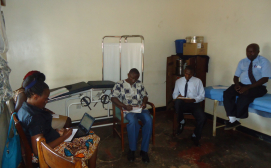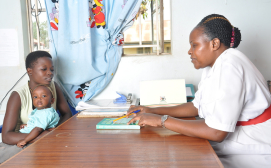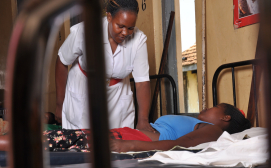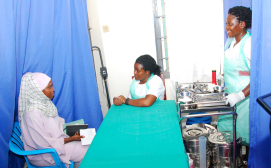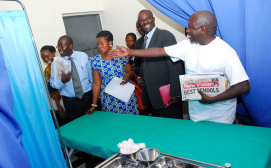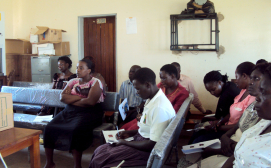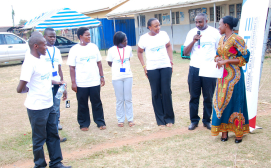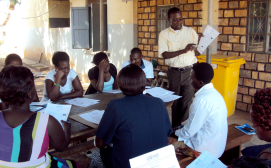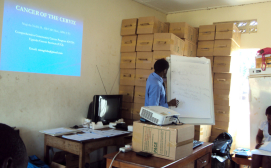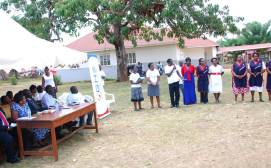Project Lead(s): Agnes Nyabigambo
Issue
Cervical cancer (CC), the third most common cancer in women, causing over 270,000 deaths worldwide each year. In Uganda, CC is the most common cancer among women, with the incidence of 47.5 per 100,000 – one of the highest incidences in the world.
CC is preventable by primary prevention using the human papilloma virus (HPV) vaccine or secondary prevention through screening, early detection and treatment of pre-cancerous lesions before they turn into invasive cancer.
Visual inspection of the cervix with acetic acid (VIA) is highly effective as a primary screening tool and is affordable, but studies have demonstrated that limited knowledge about CC, poverty and unfriendly health workers are potential barriers to the success of screening programs.
Solution
We developed and piloted a novel screening method where mothers who bring their children for routine immunizations are also screened for cervical cancer (CC). We used a simple, fast and low-cost technique that requires only visual inspection of CC lesions on the cervix upon application of 5% acetic acid by trained female nurses.
This pilot project was designed to assess the acceptability and performance of nurse-led cervical cancer screening using visual inspection with VIA in the setting of a rural childhood immunization clinic in Uganda.
A total of 777 women were screened for cervical cancer and the primary outcome was acceptance of VIA testing.
Samples for Papanicolaou (Pap) smear testing were also taken in a sub-set of women and test results were used as a gold standard for assessing the performance of VIA.
Outcome
The results of the study showed that cervical cancer screening is highly acceptable and potentially scalable in the setting of immunization clinics in Uganda.
During the study period, 777 women were screened for cervical cancer. Of these, 593 were screened for cervical cancer using the VIA method only, 79 women were screened using the Pap smear method only and 105 women were screened using both the VIA and Pap smear methods.
A total of 18 women screened using the VIA method tested positive and were referred to the Uganda Cancer Institute at Mulago Hospital in Kampala, while 105 of the women screened using the VIA method were diagnosed with other sexually related infections and were referred to the outpatient department at the Luweero Health Center HCIV for treatment.
Using Pap smears, a total of 59 smears were diagnosed with abnormal cells.
In addition to providing direct medical care, study activities averted morbidity and possible mortality.
The study team will be applying to scale up the project and have identified traditional research funding organizations, such as the U.S. National Institutes of Health and the World Health Organization Uganda Country Office, which seem interested in the work.
Study activities have been described at conferences.



